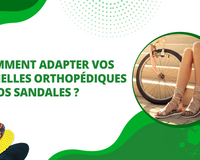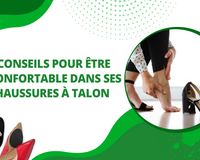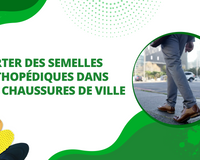
Generally speaking, valgus flatfoot is asymptomatic. But when it becomes pathological, it can cause intense pain on a daily basis, preventing you from enjoying your day to the full.
However, the valgus flatfoot rehabilitation to limit the risk of complications consists of a series of specific physiotherapy exercises to correct foot deformity and improve function.
To avoid having to resort to a valgus flatfoot operation, it's important to consult a health professional to ensure that the sessions are appropriate and safe for your condition. In addition, wearing a valgus flatfoot insole can also be necessary for your rehabilitationas well as the use of flat-foot orthopedic shoes adapted.
What are the stages of valgus flatfoot?
Generally speaking, flatfoot is classified into 3 different stages:
- Stage 1 valgus flatfoot: here, there is considerable enlargement of the footprint in the center of the foot.
- Stage 2 flatfoot valgus: at this stage, the entire plantar surface is on the ground.
- Stage 3 valgus flatfoot: at this stage, there is internal collapse (arch)
Valgus flatfoot: symptoms and types of treatment

Symptoms of valgus flatfoot
Being a plantar deformity, valgus flatfoot can be seen with the naked eye, as it is characterized by the collapse of the arch of the foot. Although it may often appear asymptomatic, it can also cause disabling pain when it becomes pathological.
But in the majority of cases, it's almost always referred to as idiopathic valgus flatfoot, as it's considered to be a "pathological" condition. pathology that causes no pain.
Given that this is a very common plantar morphology in children aged 0 to 5, it should be noted that the arch of the foot tends to form in the intervening years.
✅ However, when this deformity persists, it is advisable to consult a foot specialist.
How to treat valgus flatfoot?
For those who don't know yet, there are several ways to treat valgus flatfoot:
Insoles for valgus flatfoot
Flatfoot insoles are excellent medical devices that are recommended and can be used to correct valgus flatfoot. In fact, valgus flatfoot orthotics are designed to correct the deformity and improve the posture and function of the flatfoot.
What's more, the flatfoot insoles can also be used to relieve the pain of valgus flatfoot, as their primary function is to absorb shock and reduce strain on the knees and back.
Shoes for valgus flatfoot
In addition to a custom-made flatfoot insole, it is also advisable to wear orthopedic valgus flatfoot shoes to relieve plantar pain.
✅ The ideal shoe for this purpose is a valgus flatfoot shoe. with a wide enough fit to avoid compression of the toes.
Valgus flatfoot: rehabilitation and physiotherapy

Physical therapy and valgus flatfoot
In addition to the use of valgus flatfoot shoes or valgus flatfoot insoles, physiotherapy can also be very useful for the treatment or rehabilitation of valgus flatfoot. Your therapist can help you find exercises or physical therapy sessions that target the muscles of the foot and ankle, and that can help correct foot deformity and thus limit the collapse of the foot. arch.
In addition, based on physiotherapy, valgus flatfoot rehabilitation through physical therapy may be necessary to strengthen the muscle groups useful for maintaining the foot and restore functional amplitude to the movement of the foot joint.
Physiotherapy to avoid valgus flatfoot surgery
Considered a non-surgical form of treatment, physiotherapy can be highly effective in treating valgus flatfoot. In fact, it can save a patient from having to undergo surgery, notably through a series of flatfoot exercises performed by the physiotherapist to avoid a "foot surgery". aggravation of the pathology.
Accompanied by valgus flatfoot insoles and valgus flatfoot shoes, these specific exercises can help relieve pain and strengthen the muscles needed to maintain the medial longitudinal arch.
Valgus flatfoot exercises

Patients suffering from valgus flatfoot pathologies can use a series of specific exercises to limit foot deformity. For best results, however, it is advisable to :
- Strengthening exercises for the ankle and foot muscles, using light weights or elastic bands for example.
- Balance exercises to improve movement control and foot stability.
- Exercises to improve foot mobility, particularly in the forefoot and hindfoot.
Heel stretching for valgus flatfoot
Heel stretching is a form of exercise that can help improve the flexibility of the foot joint by relieving pain and stiffness associated with heel muscles and tendons. However, it can also help prevent injury. To stretch the heel of a valgus flat foot:
- Stand upright, then place your foot on a flat surface.
- Gently pull your foot towards you, holding your ankle with your free hand. Before releasing, hold this position for a few seconds.
- Repeat the exercise several times to achieve the desired results.
Arch elevation for valgus flatfoot
In addition to the heel-stretching exercises mentioned above, arch elevation can also be used to strengthen the necessary foot muscles and lift the medial longitudinal arch.
To achieve this arch elevation, you can :
- Adopt an upright position, with your feet in line with your hips.
- Keep your toes firmly planted on the ground and shift your weight to the outside of your feet.
- Then lift the inner arch as high as you can.
- Slowly release your feet.
- Finally, perform three sets of fifteen repetitions each.
Fascia and arch massage for valgus flatfoot

Fascia and arch massage is a specific type of massage designed to relax and loosen the muscles and tendons of the foot and heel, using a tennis ball. To use :
- Place a tennis ball under your right foot and roll it along the arch, keeping your spine straight.
- Repeat this massage for two to three minutes.
- Finally, repeat the operation on your left side.









